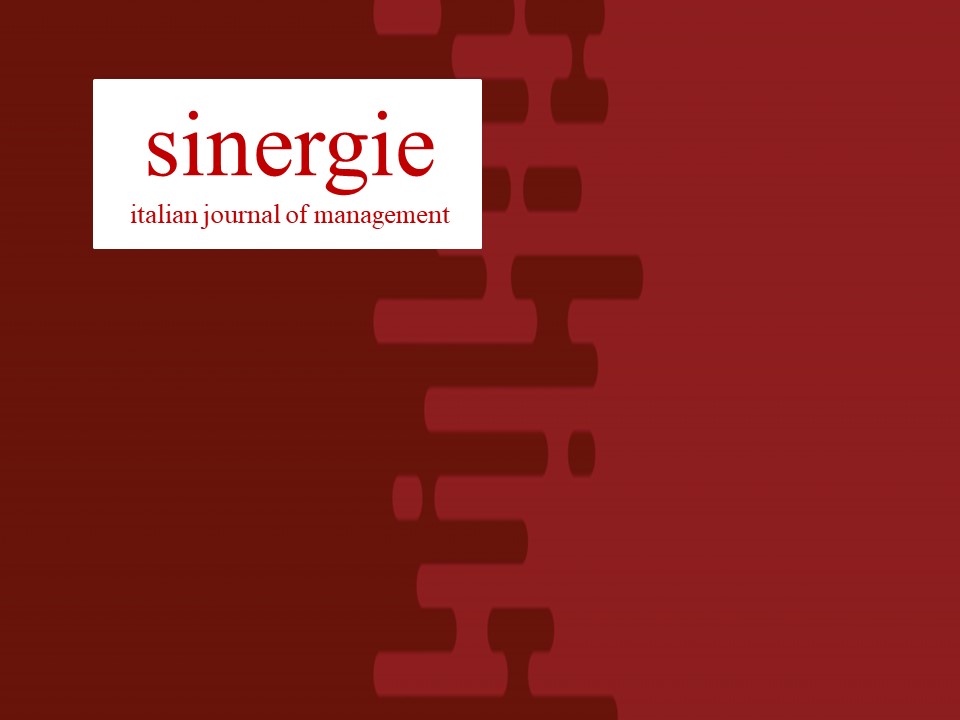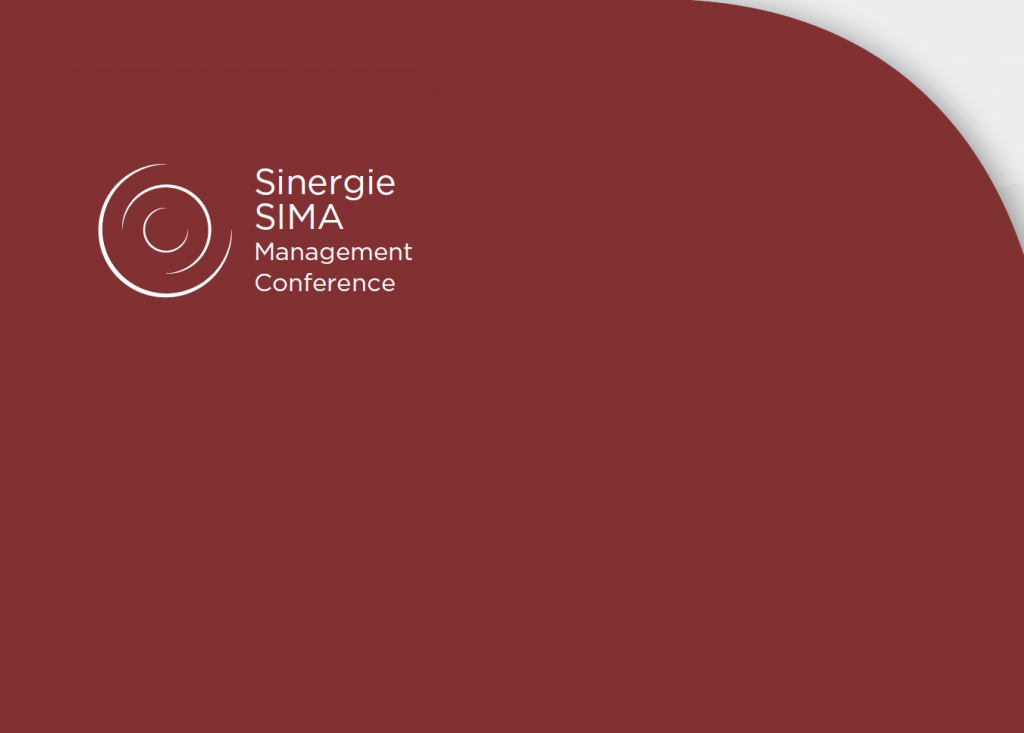Le decisioni manageriali e la rivoluzione comportamentale
Obiettivo del paper: Il paper descrive come economia sperimentale e psicologia cognitiva abbiano influenzato lo sviluppo degli studi comportamentali sulle decisioni allinterno delle discipline manageriali; critica lapproccio comportamentale largamente dominante negli studi di management; propone di recuperare lereditdella c.d. scuola di Carnegie come elemento fondativo di una piena rivoluzione comportamentale nello studio delle decisioni manageriali.
Metodologia: Il lavoro adotta una prospettiva comparativa e interdisciplinare per discutere lapplicazione dellapproccio comportamentale allo studio delle decisioni nelle discipline e nella pratica manageriale.
Risultati: Per un pieno compimento della rivoluzione comportamentale negli studi di management, il paper indica la necessitdi integrare lapproccio basato sulla correzione del bias decisionale utilizzando le evidenze comportamentali in chiave evolutiva, ecologica e costruttivista.
Limiti della ricerca: Il presente lavoro non affronta tutta la letteratura sul processo decisionale manageriale, ma si limita al confronto fra recenti studi sperimentali e lapproccio comportamentale della Scuola di Carnegie, per evidenziare carenze e potenzialitper lo studio teorico e applicato delle decisioni manageriali.
Implicazioni pratiche: Il paper suggerisce come una considerazione picompleta degli aspetti comportamentali implichi la ridefinizione di molte pratiche decisionali del management.
Originalitdel paper: Il lavoro delinea alcune linee guida per lo sviluppo di un programma di ricerca comportamentale di carattere originale per le discipline manageriali. Esso integra luso di procedure correttive per i modelli razionali di scelta, per tenere conto di apprendimento, selezione, aspetti ecologici allinterno dei comportamenti decisionali, e del rapporto tra modelli decisionali adottati e la natura contingente dei problemi di scelta incontrati dai decisori.
Riferimenti bibliografici
AKERLOF G.A., KRANTON R.E. (2010), Identity economics: How our identities shape our work, wages, and well-being, Princeton University Press, Princeton, NJ.
ARIELY D., LOEWENSTEIN G., PRELEC D. (2003), Coherent arbitrariness: Stable demand curves without stable preferences, The Quarterly Journal of Economics, vol. 118, n. 1, pp. 73-106.
ARIELY D. (2010), Predictably irrational, (rev. ed.), Harper Perennial, London.
AUGIER M., MARCH J.G. (2011), The roots, rituals and rhetorics of change: North American business schools after the Second World War, Stanford University Press, Stanford, CA.
BACCARANI C. (2010), Complessita? e intelligenza manageriale, Sinergie, n. 81, pp. 97-111.
BAZERMAN M.H., CHUGH D. (2006), Decisions without blinders, Harvard Business Review, vol. 84, n.1, pp. 88-97.
BAZERMAN M.H., MOORE D.A. (2009), Judgment in managerial decision making. (settima ed.), John Wiley and Sons, Hoboken, NJ.
BELL D.E., RAIFFA H., TVERSKY A. (1988), Descriptive, normative, and prescriptive interactions in decision making, in Bell D.E., Raiffa H., Tversky A. (a cura di), Decision making. Decriptive, normative and prescriptive interactions, Cambridge University Press, Cambridge, pp. 9-30.
BERNARDO A.E., WELCH I. (2001), On the evolution of overconfidence and entrepreneurs, Journal of Economics and Management Strategy, vol. 10, n. 3, pp. 301-330.
BINGHAM C.B., EISENHARDT K.M. (2011), Rational heuristics: the simple rules that strategists learn from process experience, Strategic Management Journal, vol. 32, n. 13, pp. 1437-1464.
BOWLES S., GINTIS H. (2011), A cooperative species: Human reciprocity and its evolution, Princeton University Press, Princeton, NJ.
BRUNETTI F. (2010), Di cosa parliamo quando parliamo di scienze manageriali?, Sinergie, n. 86, pp. 69-89.
CAMERER C.F. (2003), Behavioral game theory: Experiments in strategic interaction, Russell Sage Foundation & Princeton University Press, New York & Princeton, NJ.
CAMERER C.F., LOEWENSTEIN G. (2004), Behavioral economics: Past, present, future, in Camerer C.F., Loewenstein G., Rabin M. (a cura di), Advances in behavioral economics, Princeton University Press, Princeton, Russell Sage Foundation ed., NJ, pp. 3-51.
CHARNESS G., RABIN M. (2002), Understanding social preferences with simple tests, Quarterly Journal of Economics, vol. 117, n. 3, pp. 817-869.
CHOPLIN J.M., HUMMEL J.E. (2005), Comparison-induced decoy effects, Memory & Cognition, vol. 33, n. 2, pp. 332-343.
COHEN M.D., MARCH J.G., OLSEN J.P. (1972), A garbage can model of organizational choice, Administrative Science Quarterly, vol. 17, n. 1, pp. 1-25.
CYERT R.M., MARCH J.G. (1963), A behavioral theory of the firm, Prentice-Hall, Englewood Cliffs, NJ.
DELLA VIGNA S. (2009), Psychology and economics: Evidence from the field, Journal of Economic Literature, vol. 47, n. 2, pp. 315-372.
DEVETAG G., LEGRENZI P., WARGLIEN M. (1997), Come le alternative inefficienti influenzano le nostre decisioni, Sistemi Intelligenti, vol. 9, n. 3, pp. 377-398.
EGIDI M. (2005), Errori e fallibilit, Networks, n. 5, pp. 102-115.
FEHR E., GCHTER S. (2000), Fairness and retaliation: The economics of reciprocity The Journal of Economic Perspectives, vol. 14, n. 3, pp. 159-181.
FEHR E., SCHMIDT K. M. (1999), A theory of fairness, competition, and cooperation, Quarterly Journal of Economics, vol. 114, n. 3, pp. 817-868.
FEHR E., CAMERER C.F. (2007), Social neuroeconomics: the neural circuitry of social preferences, Trends in Cognitive Sciences, vol. 11, n. 10, pp. 419-427.
FISCHHOFF B., SLOVIC P, LICHTENSTEIN S. (1977), Knowing with certainty: The appropriateness of extreme confidence, Journal of Experimental Psychology: Human Perception and Performance, vol. 3, n. 4, pp. 552-564.
GIGERENZER G., TODD P.M., ABC RESEARCH GROUP, (a cura di) (1999), Simple heuristics that make us smart, Oxford University Press, New York, NY.
GIGERENZER G. (2007), Gut feelings: The intelligence of the unconscious, Viking Press, New York, NY.
GINO F. (2013), La scelta giusta, Sperling Kupfer, Milano.
GNEEZY U., RUSTICHINI A. (2000), Pay enough or dont pay at all, The Quarterly Journal of Economics, vol. 115, n. 3, pp. 791-810.
HALL R.L., HITCH C.J. (1939), Price theory and business behaviour, Oxford Economic Papers, n. 2, pp. 12-45.
HAMMOND J.S., KEENEY R.L., RAIFFA H. (1998), The hidden traps in decision making Harvard Business Review, vol. 76, n. 5, pp. 47-58.
HARRISON J.R., MARCH J.G. (1984), Decision making and postdecision surprises, Administrative Science Quarterly, vol. 29, n. 1, pp. 26-42.
HASELTON M.G., NETTLE D., ANDREWS P.W. (2005). The evolution of cognitive bias, in Buss D.M. (a cura di), The handbook of evolutionary psychology (pp. 724-746), John Wiley, Hoboken, NJ.
HARROD R.F. (1939), An essay in dynamic theory, The Economic Journal, vol. 49, n. 193, pp. 14-33.
HENRICH J., BOYD R., BOWLES S., CAMERER C., FEHR E., GINTIS H., MCELREATH R. (2001), Cooperation, reciprocity and punishment in fifteen small-scale societies, American Economic Review, vol. 91, n. 2, pp. 73-78.
HONG L., PAGE S.E. (2004), Groups of diverse problem solvers can outperform groups of high-ability problem solvers, Proceedings of the National Academy of Sciences of the United States of America, vol. 101, n. 46, pp. 16385-16389.
HOSSEINI H. (2003), The Arrival of Behavioral Economics: From Michigan, or the Carnegie School in the 1950s and the early 1960s?, Journal of Socio-Economics, vol. 32, n. 4, 391-409.
HUBER J., PAYNE J.W., PUTO C. (1982), Adding Asymmetrically Dominated Alternatives: Violations of Regularity and the Similarity Hypothesis, Journal of Consumer Research, vol. 9, n.1, pp. 90-98.
KAHNEMAN D., TVERSKY A. (1979), Prospect theory: An analysis of decision under risk, Econometrica, vol. 47, n. 2, pp. 263-291.
KAHNEMAN D., TVERSKY A., a cura di (2000), Choices, values, and frames, Cambridge University Press, Cambridge, MA.
KLAYMAN J., HA Y.W. (1987), Confirmation, disconfirmation, and information in hypothesis testing, Psychological Review, vol. 94, n. 2, pp. 211-228.
LAUREIRO-MARTNEZ D., BRUSONI S., ZOLLO M. (2010), The neuroscientific foundations of the exploration-exploitation dilemma, Journal of Neuroscience, Psychology, and Economics, vol. 3, n. 2, pp. 95-115.
LEVINTHAL D.A., MARCH J.G. (1993), The myopia of learning, Strategic Management Journal, vol. 14, n. S2, pp. 95-112.
LEVINTHAL D.A. (2011), A behavioral approach to strategy – whats the alternative?, Strategic Management Journal, vol. 32, n. 13, pp. 1517-1523.
LINDMAN H.R. (1971), Inconsistent Preferences among Gambles, Journal of Experimental Psychology, n. 89, vol. 2, pp. 390-397.
MARCH J.G. (1994), A primer on decision making: How decisions happen, Simon and Schuster, New York, NY.
MARCH J.G., SIMON H.A. (1993), Organizations, Blackwell Publishers, Cambridge, MA.
MAYO E. (1933), The human problems of an industrial civilization, MacMillan, New York, NY.
MAYO E. (1945), The social problems of an industrial civilization, Division of Research, Graduate School of Business Administration, Harvard University, Boston, MA.
PAGE S.E. (2007), The difference: How the power of diversity creates better groups, firms, schools, and societies, Princeton University Press, Princeton, NJ.
PAYNE J.W., BETTMAN J.R., JOHNSON E.J. (1993), The Adaptive Decision Maker, Cambridge University Press, Cambridge, MA.
PETTIBONE J.C., WEDELL D.H. (2007), Testing alternative explanations of phantom decoy effects, Journal of Behavioral Decision Making, vol. 20, n. 3, pp. 323-341.
RADNER R. (1996), Bounded rationality, indeterminacy, and the theory of the firm, The Economic Journal, vol. 106, n. 438, pp. 1360-1373.
ROSSI A. (2013), Le decisioni manageriali. Modelli teorici ed evidenze empiriche, Franco Angeli, Milano.
ROTH A.E. (2002), The economist as engineer: Game theory, experimentation, and computation as tools for design economics, Econometrica, vol. 70, n.4, pp. 1341-1378.
SHAPIRA Z., (a cura di) (1997), Organizational decision making, Cambridge University Press, Cambridge, UK.
SIMON H.A. (1947), Administrative behavior, The Free Press, New York, NY.
SIMON H.A. (1955), A behavioral model of rational choice, The Quarterly Journal of Economics, vol. 69, n. 1, pp. 99-118.
SIMON H.A. (1962), The architecture of complexity, Proceedings of the American Philosophical Society, vol. 106, n. 6, pp. 467-482.
SIMON H.A. (1988), The new science of management decision. Englewood Cliffs, NJ, Prentice Hall. (trad. it.) Informatica, direzione aziendale e organizzazione del lavoro. La nuova scienza delle decisioni manageriali, Franco Angeli, Milano, 1988 (la prima edizione inglese del 1960)
SIMON H.A. (1987), Bounded rationality, The new Palgrave. A dictionary of economics, Macmillan, London, pp. 266-268.
SIMON H.A. (1996), The sciences of the artificial, (terza ed.), Macmillan, New York, NY. (la prima edizione del 1947).
SIMON H.A., SCHAEFFER J. (a cura di) (1992), The game of chess, Elsevier, New York, NY.
SIMONSON I. (1989), Choice based on reasons: The case of attraction and compromise effects, Journal of Consumer Research, vol. 16, n. 2, pp. 158-174.
SLOVIC P., LICHTENSTEIN S. (1968), The Relative Importance of Probabilities and Payoffs in Risk Taking, Journal of Experimental Psychology, n. 78, vol. 3, pt. 2, pp. 1-18.
THALER R.H., SUSTER C.R. (2008), Nudge: improving decisions about health, wealth, and happiness, Yale University Press, New Haven, CT.
TVERSKY A. (1972), Elimination by aspects: A theory of choice, Psychological Review, vol. 79, n.4, pp. 281-299.
TVERSKY A., KAHNEMAN D. (1974), Judgment under uncertainty: Heuristics and biases, Science, vol. 185, n. 4157, pp. 1124-1131.
TVERSKY A., KAHNEMAN D. (1981), The framing of decisions and the psychology of choice, Science, vol. 211, n. 4481, pp. 453-458.


